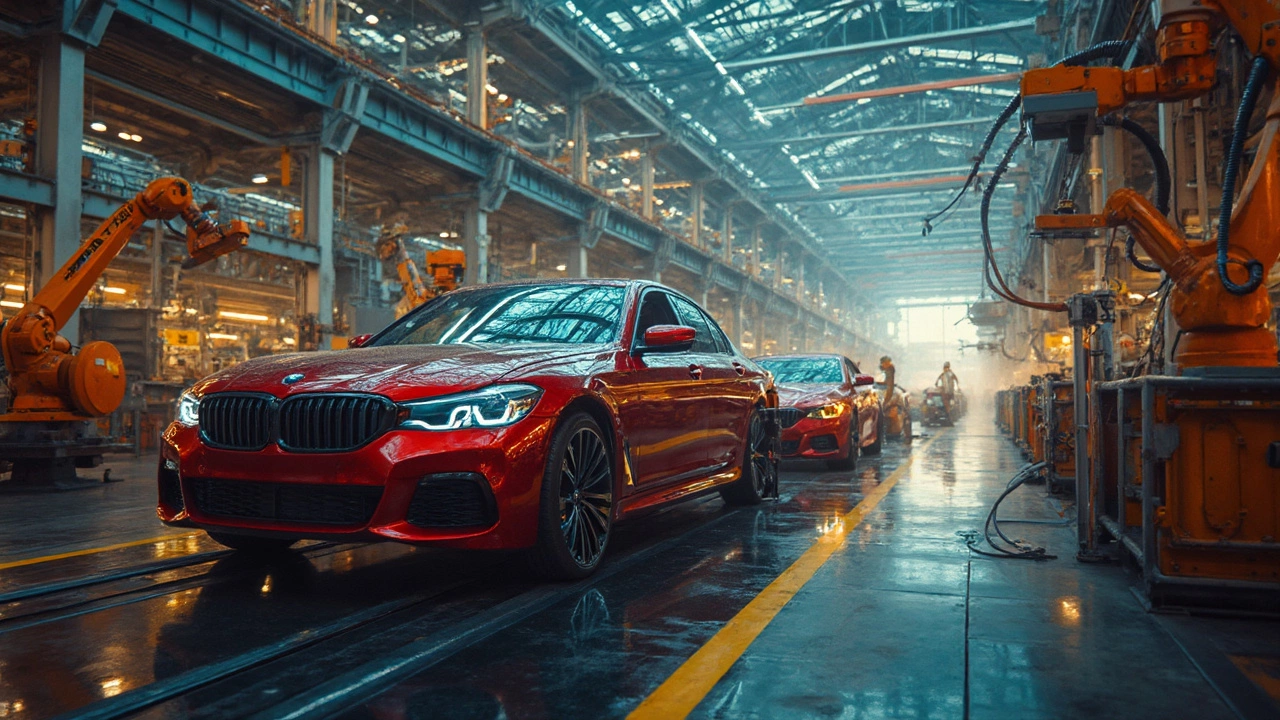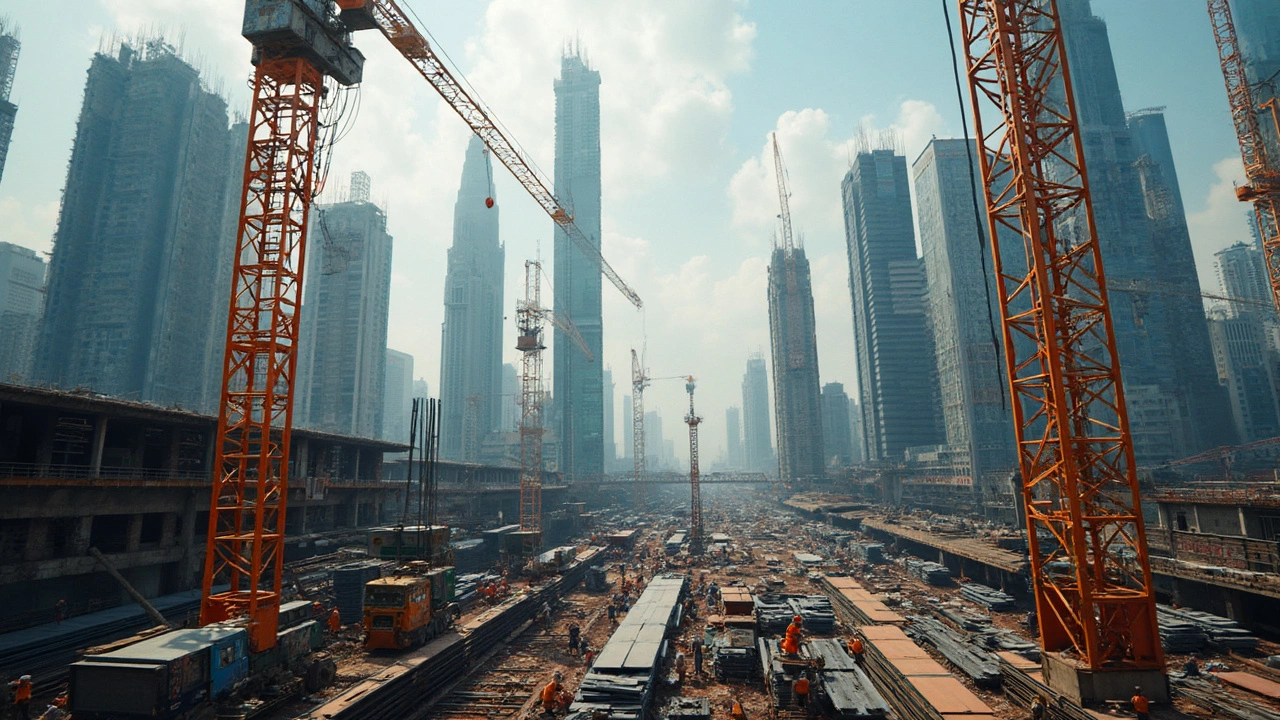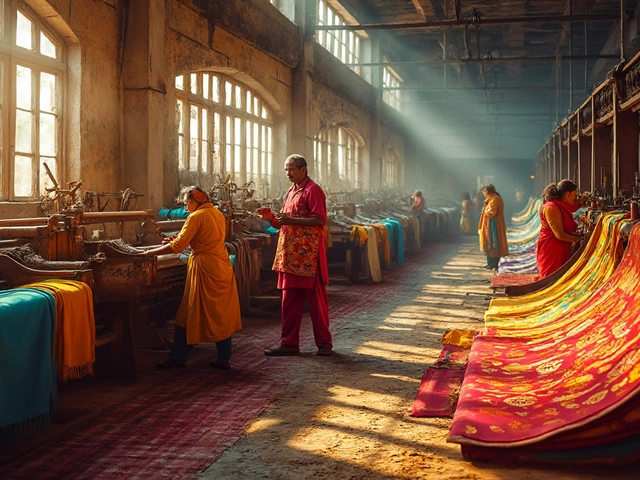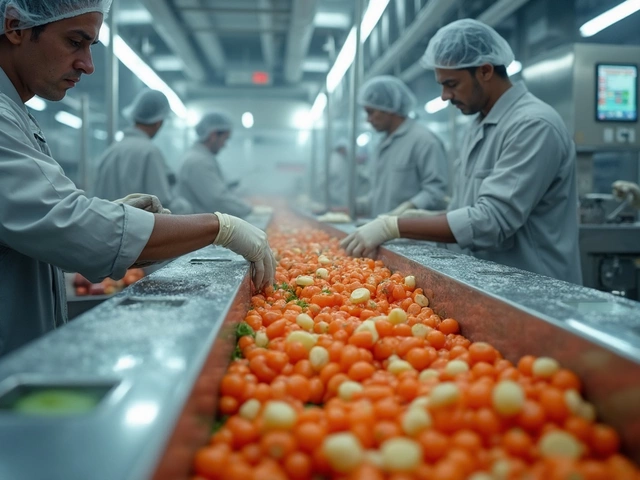Ever wondered who eats up tons of steel daily? Big surprise—it’s not just skyscrapers and bridges. Seriously, the world of steel consumption is more nuanced than you think. Let's start by acknowledging the heavy hitters. The construction industry reliably stands at the forefront. Why? Because let's face it, cities are expanding faster than you can say ‘urban development.’ Steel is crucial for making structures sturdy and long-lasting. No wonder they've got such a craving.
But don’t underestimate the automotive industry. Car manufacturers use a staggering amount of steel to roll out new vehicles each year. Yeah, those shiny cars zipping around on highways are basically rolling metal, and steel happens to be the backbone. With innovation fever running wild—electric vehicles, anyone?—the appetite is only going to grow.
- Top Industries Consuming Steel
- Why Construction Leads
- Automotive Industry's Steel Appetite
- Emerging Markets and Future Trends
Top Industries Consuming Steel
When it comes to hoarding steel, some industries eat it up in surprising volumes. Let's take a closer peek at the sectors that can’t seem to get enough of this shiny metal.
Construction – The Steel Giant
Unsurprisingly, the construction sector is leading the pack. Skyscrapers, residential buildings, bridges—they all rely heavily on steel. This industry alone gobbles up about half of the global steel output. The reason is simple; steel’s durability and structural integrity make it a favorite for these projects. It's sort of the secret sauce that keeps buildings standing tall against natural forces.
Automotive Industry – Revving Up
Next up, let’s talk cars. The automotive industry uses steel like it’s going out of fashion. Nearly 12% of global steel consumption is due to vehicle manufacturing. Why? Because steel provides the necessary strength without weighing vehicles down too much. It’s critical for safety features, too.
Oil and Gas – Under the Radar But Huge
This might be unexpected, but the oil and gas sector is a hidden player when it comes to consuming steel. Pipelines, rigs, refineries—they’re all stacked with metal to keep things flowing smoothly. Think of it as the backbone of all those million-dollar extraction projects.
Infrastructure and Public Works
Roads, railways, bridges, oh my! Infrastructure demands significant amounts of steel. It’s not just about new construction, either; maintaining and upgrading older structures requires a hefty load of it as well. Considering all this, the infrastructure sector might be a little underhyped, but it's essential.
| Sector | Percentage of Global Steel Consumption |
|---|---|
| Construction | 50% |
| Automotive | 12% |
| Oil and Gas | 8% |
| Infrastructure | 10% |
Why Construction Leads
Ever driven through a city and noticed the skyline constantly changing? That's the construction industry at play, and it’s no surprise that it’s the top consumer in the steel industry. From residential buildings to skyscrapers and everything in between, construction needs a lot of steel to keep its projects standing tall and steady.
Steel consumption in construction is massive because it's the go-to material for its strength and flexibility. It's not just about holding up massive structures. Steel is used for reinforcing concrete, making frames, and even in the design elements of buildings.
According to the World Steel Association, "Approximately 50% of steel production goes into the construction sector, it's an irreplaceable material."
Types of Construction Using Steel
Steel isn’t one-size-fits-all, and its usage is as varied as the construction projects themselves. Here’s a snapshot:
- Commercial buildings: From shopping malls to office blocks, steel's robust nature is key.
- Residential projects: Think high-rises and housing developments. Steel ensures safety and longevity.
- Industrial structures: Factories and plants—the demand here is constant.
Urbanization and Growth
Urbanization is a huge driver. With more people flocking to cities, the demand for new infrastructure and housing rises. The construction sector is on overdrive, and naturally, the need for steel follows. It’s estimated that urban areas could house two-thirds of the global population by 2050. That's a lot of homes and office spaces needed, fueling further steel demand.
The construction industry sets the pace, and it’ll likely stay in the lead as urban areas continue to grow and evolve. So next time you see another crane on the skyline, remember it's part of a bigger picture—a picture painted largely in steel.

Automotive Industry's Steel Appetite
Here's the thing—cars, trucks, and other vehicles rely heavily on steel. You might not think about it, but around 900 kilograms of steel is used in the average car. That's a lot of metal when you consider the number of vehicles produced worldwide each year. Talk about a metal monster, right?
Why so much steel? It's about strength and safety. Steel provides the durability that protects drivers and passengers, making it crucial for withstanding crashes and keeping everyone inside safe. Plus, its cost-effectiveness and recyclability make it a no-brainer for the industry.
Shift to Electric Vehicles
These days, the buzz is all about electric cars. They’re cleaner, sure, but they don’t stray far from steel. Believe it or not, steel manufacturing plants still play a vital role here. While electric vehicles sometimes use more aluminum to shed weight for better battery efficiency, steel remains essential for structural integrity.
Booming Car Production
Worldwide car production was over 80 million units in 2023, according to the latest figures from international auto manufacturers. That's a staggering amount of steel consumption for one sector. Even as production dips and soars with trends and consumer demand, the reliance on this sturdy material doesn't waver.
| Year | Global Car Production (Millions) |
|---|---|
| 2020 | 78.1 |
| 2021 | 80.2 |
| 2023 | 82.5 |
The domino effect of this demand influences steel manufacturers far beyond the factory floor, shaping an industry that’s both dynamic and foundational.
So next time you see a car, remember there’s a story of steel behind that shiny paint and sleek design, ensuring safety and longevity. Without steel, the roads would look a lot emptier and our rides a lot less secure.
Emerging Markets and Future Trends
Peek into the future, and you'll see that the steel industry is on the brink of some pretty exciting changes. Emerging markets like India and Southeast Asian countries are becoming steel magnets. Why? Well, they've got this massive wave of urbanization and development projects happening. High-rise buildings, infrastructure, all need steel foundations. It's like the steel universe is expanding, but not in outer space!
India, for example, has been making headlines with its ambitious infrastructure projects. From new metro rails to the highways connecting remote areas, it's a bustling scene. Interestingly, the country's steel demand is expected to see an upswing, with a projected rise of nearly 7% annually through 2025.
"The primary drivers for increased steel consumption are urbanization and infrastructure development," says John Peterson, Senior Analyst at Global Steel Watch.
Now, let’s not forget technology's role here. The buzz around green technology and sustainable building practices is pushing the industry to adapt. This means producing high-strength yet lightweight steel which doesn't just cut down the weight but also boosts energy efficiency.
Game Changers: Technology and Sustainability
- Recycling Steel: It's the ultimate in being eco-friendly. Not only does it save energy, but it also lessens the impact on mining raw materials.
- High-Strength Steel: It's on the rise, especially in automotive production where reducing vehicle weight is the name of the game.
- AI and Automation: These aren't just buzzwords. They're for real in steel manufacturing, offering efficiency leaps and streamlining production processes.
If you think innovation stops there, brace yourself. The push for 'greener' solutions means that countries are advocating for lower CO2 emissions linked to steel manufacturing. In places like Europe, regulations may stiffen, compelling industries to rethink their strategies.
With all these evolving patterns, businesses need to stay on their toes. Recognizing who the biggest customers of steel are today might just be the stepping stone to predicting the markets of tomorrow—a brilliant opportunity waiting to be seized!






